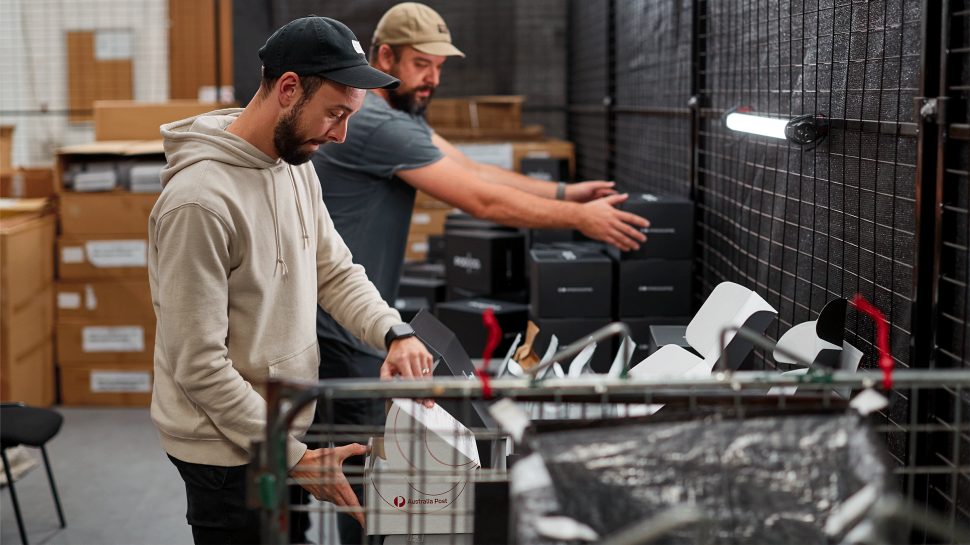An expert’s six top strategies for building a resilient supply chain
If there’s one thing the pandemic taught business leaders, it’s the importance of supply chain resilience. Subject matter expert, Professor Yalçın Akçay, talks about how to strengthen yours.

Key points
- A resilient supply chain helps you absorb, adapt and recover from disruptive events.
- To improve supply chain operations and performance, you need to pressure test every link in the chain.
- Gaining full visibility across your supplier network is key to supply chain resilience.
What is a resilient supply chain?
For any eCommerce business to thrive in the long term, resiliency must be embedded into every element of its structure. Its people. Its product lines. And, of course, its supply chain.
Building a resilient supply chain can mean the difference between successfully riding out an unexpected catastrophe or suffering a major setback.
According to Professor Yalçın Akçay — Professor of Operations Management at Melbourne Business School, Director at the Centre for Business Analytics and co-author of Building resilient Australian supply chains — supply chain resilience is defined as the “ability to absorb, adapt and recover from disruptive events in your end-to-end supply chain.”
What constitutes a disruptive event? The global pandemic is a prime example (one need only think of the chronic toilet paper shortages to remember its impact on supply chains).
One-off incidents can be disruptive, too. Think of the container ship that ran aground in the Suez Canal in 2021, blocking off one of the world’s most significant trade routes for six days. Or the severe floods in 2022 that affected railway supply routes in Australia.
One thing these events have in common? Their unpredictable nature. While it’s hard to predict the future, you can certainly prepare for unforeseen events by improving your supply chain resilience.
We spoke at length with Professor Akçay on the role of resilience in supply chain performance for our 2023 Inside Australian Online Shopping report.

1. Learn (and unlearn) from the last few years
The blueprint for supply chain resilience hasn’t changed since 2001 when, after the terror attacks in the United States, academics started exploring the topic more closely. Yet, as Professor Akçay wryly observes, humans can easily forget the hard lessons of the past in their quest to get back to normal.
“Once you get over a disruption, you immediately forget about it. When a business does this — which is what 99% of all organisations did after COVID-19— they go back to managing supply chains at minimum cost. But that’s not right. You might have a few good years, but it doesn’t mean that you have a reliable supply network,” he says.
“Organisations and decision-makers should take the opportunity now to move out of crisis management mode and come up with proper strategies to build resilient supply chains.”
2. Shift your supply chain management mindset
Effective supply chain management involves striking the right balance between cost-efficiency and reliability. In the past, many businesses erred on the side of running a lean supply chain at minimal possible cost. Which is fine, in theory, if there are no disruptions in the world. Yet when a major event occurs, these lean models are severely stretched.
Professor Akçay says, “The reason why many organisations failed is that they didn’t have enough inventory at various stages of their supply network, and they couldn’t find alternative suppliers or supply routes.
“This, along with a big shift in demand triggered by the lockdowns and a global shortage of containers, put new pressures on Australian supply chains.
”Professor Akçay suggests a back-to-basics approach that factors in both dimensions of supply chain management: cost efficiency and reliability. “Unfortunately, that might mean there are trade-offs. If you want a more reliable supply network, you may incur additional costs and arrange multiple suppliers so you’re not relying on a single, critical supplier.”
“You might also need to build extra buffer into your system. This could mean storing additional stock or sourcing new suppliers. A real mindset shift needs to happen.”
3. Understand your supplier network
Gaining better visibility across the end-to-end supplier network is also critical, from tier one through to raw material suppliers. Professor Akçay says, “Even at the very senior level, organisations may have knowledge of their first-tier suppliers — that is, who they get immediate supplies from — but when it gets to the second-tier suppliers, they have no information.”
To get full visibility across the supply chain, Professor Akçay suggests incentivising suppliers to share information about their operations. This can be particularly effective for smaller suppliers, who may have previously been reluctant to share data for fear of being squeezed out of the game. When it comes to building a strong supply chain, having knowledge of all your suppliers will put you in a better position during periods of disruption.
4. Learn to accurately assess business risks
Once you’ve got visibility of the network, identify suppliers that pose the greatest risk. These are ones that would have the greatest impact on your business if their supply ceases. Interestingly, the riskiest suppliers aren’t necessarily your biggest or main suppliers.
“A big misconception is that the main supplier poses the biggest risk. Organisations assume that if something happens to that supplier, it’ll have the biggest financial impact. That is not correct,” says Professor Akçay.
“It’s more likely that the supplier with a very low trade volume will be the biggest risk. If they stopped shipping things to you, it might mean you have to stop what you’re doing at the factory, because it may be harder to source an alternative.” Again, it comes down to looking at both aspects of risk and their potential impact on your bottom line, or your output.
5. Adopt a multi-sourcing strategy for supply chain operations
Multi-sourcing spreads your supply chain risk across a range of suppliers from different geographies. This way, if one region is impacted by an extreme event, you have alternatives.
Professor Akçay cites Toyota as an example of what can go wrong when a company adopts a lean supply chain strategy.
After Japan’s major earthquake and tsunami in 2011, Toyota struggled to maintain business as usual. Many of its tier-one suppliers relied on a common set of tier-two suppliers, whose manufacturing capabilities were impacted by the disasters.
If Toyota had adopted a multi-sourcing strategy, they could have kept their production lines going.
6. Invest in new technology and analytics
Technology now plays a key role in supply chain operations and resilience, and every business should be investing in things like predictive analytics and optimisation.
For example, a digital twin of your supply chain can simulate physical operations and enable end-to end visibility.
“You can very quickly build a digital twin, and then you can simulate various disruptions and assess different risks. You can also see how to protect the entire supply chain network by adding extra protection layers,” says Professor Akçay.
The latest tools help you quickly and easily test every link across your entire supply chain.
“Say there’s a link between a tier-one and a tier-two supplier. What happens if it’s disrupted due to flooding or local labour issues? With analytics, you can evaluate the impact on your organisation; and you can also test whether working with different suppliers could reduce overall risk.”
It's all about estimating the potential impact of risks and disruptions before they occur, so you can proactively mitigate their effect.
Knowing the risks
There are few certainties in business, but in Australia – it's highly likely you’ll experience a supply chain disruption of some sort. There are a few reasons for this: our isolated location - which means we rely on ports to ship a lot of our goods and in out of the country, and our geography – which spans several climate zones.
This means our sunburnt country is prone to every type of weather event that can cut off supply lines, from floods to bushfires. Understanding the risks your business and suppliers are vulnerable to will help you put strategies in place to deal with them, should they occur.
Test your supply chain resilience
Keen to find out how your supply chain would cope in the event of a disaster? Take our supply chain fitness check.
Want to save money on parcel sending
Want to save money on parcel sending
The more you send with MyPost Business, the more you save. In fact, you can save up to 40% off domestic parcels and up to 35% on international parcels.



